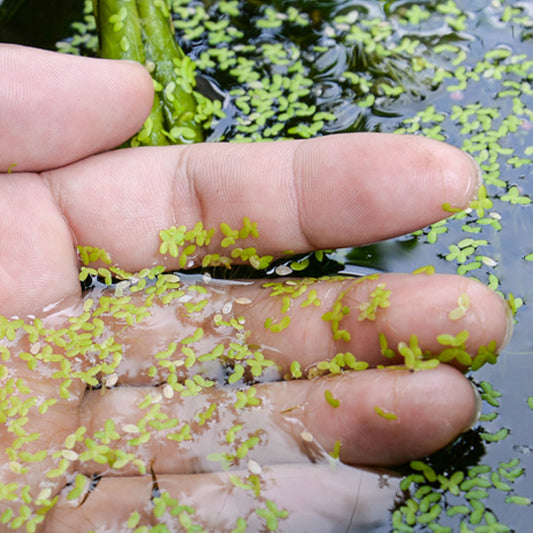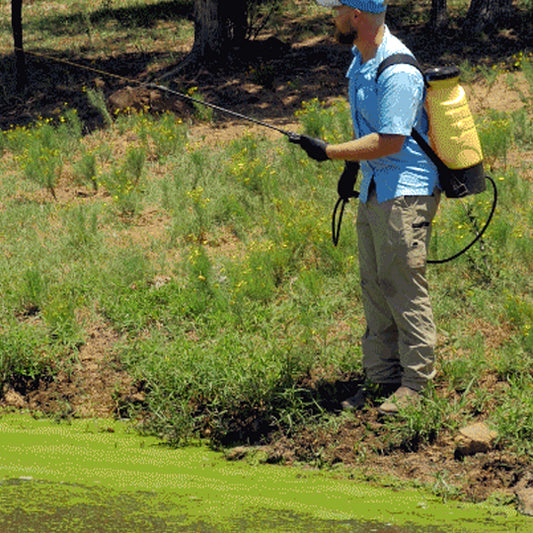Enjoying Your Pond

Ponds are built and maintained for a variety of reasons; for fishing, for swimming, to beautify property, or to provide an irrigation or watering resource. Retention ponds, golf course ponds and wastewater treatment ponds are also popular. Often a pond may serve a combination of these purposes.
It is important to consider all the uses of your pond before determining a maintenance routine, since each use will profoundly impact the treatment options you choose. For example, a pond primarily intended for irrigation should not be treated with a product in July that requires a lengthy watering restriction. And a pond primarily used for fishing will require a different approach to weed and algae control than a pond used for swimming only that contains no fish.
Once you have considered the size and uses of your pond, consider the way water flows in and out of your pond. Many enclosed ponds overflow only during a heavy rain. Ponds fed by active springs or streams may have water flowing out of them. Water outflow could have an impact on some (but not all) types of treatments. In nearly every case, however, a balanced approach to controlling pond weed and algae growth will produce the best results.
Pond size can greatly determine the use of your pond and the challenges you might face. Large waterbodies are slower to change, but in small waterbodies or aquatic gardens small changes make a big impact. SePRO is helping to address the issues facing aquatic garden owners by offering several of our products in new, smaller package sizes.
Things to consider
It is important to correctly identify the weeds to be treated and choose the appropriate formulation to achieve the best results. Each individual waterbody and weed situation may require a unique prescription. SePRO offers a variety of products to help with your pond maintenance needs. In the Pond Care 101 site, you will learn how to establish a reliable maintenance schedule for your pond and get the most enjoyment from the unique features of your waterbody.
After you have a clear picture of the intended use of your pond, you need to consider setting up a regular maintenance program. Aquatic plants benefit fish production by producing more surface area for macroinvertabrate colonization. Ducks also feed on submerged plant life. But too much weed or algae growth can make fishing and swimming difficult, clog irrigation pipes, or create a highly unpleasant discoloration and odor. Make a list of the potential problems faced by your pond, then look for any factors.

Watershed issues
Are there excess nutrients flowing into your pond? Anything "uphill" from your pond will eventually influence the water quality. Look around your pond...are there areas that might be over-contributing to the nutrient load? If possible, try to plant a "natural filter" in heavy erosion areas, such as tall grasses or cattails, to help act as a natural barrier for excess nutrient influx. Although cattails can become a problem if left unchecked, they are easy to grow in controlled areas with the regular use of AquaPro® and, in addition to acting as a very effective nutrient filter, they also provide excellent habitat and food sources for wildlife.
Wildlife
At times, area wildlife can become a problem. Muskrats can destabilize shorelines, beavers can plug an outflow and cause flooding, and an overpopulation of Canadian Geese can seriously damage the terrestrial areas around your pond. Canadian Geese can also contribute to nutrient build up and can transport problem weed species from one pond to another. Look at the impacts of area wildlife on your pond and determine if you want to encourage or discourage certain visitors to your pond.
Weeds
By definition, a weed is "a plant growing out of place." Plants can benefit a pond, but they become "weeds" by growing out of control or in areas where they interfere with pond use. An excess of "bad vs. good" plant growth can create a variety of problems including stunted fish populations, mosquito growth, foul odors, unsafe swimming conditions and clogged irrigation pipes that can cost thousands of dollars in repairs and lost ornamentals. Many aquatic weeds are of little value as a food source or habitat structure. Ridding your pond of invasive species allows nature to restore native plants to support the fish and wildlife. The first step in fighting unwanted weed growth in your pond is to identify the type of plants you are dealing with.
Algae
Water supplies are threatened by excessive nutrients entering through lawn and garden run-off, wastewater discharges, detergent wastes, septic tank seepage and agricultural run-off. Excessive nutrients support dynamic growth of aquatic algae, interfering with intended water uses and sometimes presenting health hazards to humans and animals.
Algae, primitive plants with no true leaves, stems or root systems, can lead to a variety of problems:
- Blue-green algae can cause illness and sometimes fatalities in pets, livestock and wildlife.
- Exposure to or ingestion of blue-green algae can also lead to a variety of discomforts in humans.
- Algae contamination can discolor drinking water and create unpleasant odors and tastes. Excessive algae growth can also impart distasteful flavor to fish.
- Algae decomposition can deplete oxygen in bodies of water and kill fish.
- Excess algae can impede water intake from fire ponds and irrigation systems.
- Algae can elevate organic solid content and the biological oxygen demand in wastewater oxidation ponds.
- Excessive algae growth can quickly change lakes, ponds, lagoons and shorelines from scenic to unsightly.




